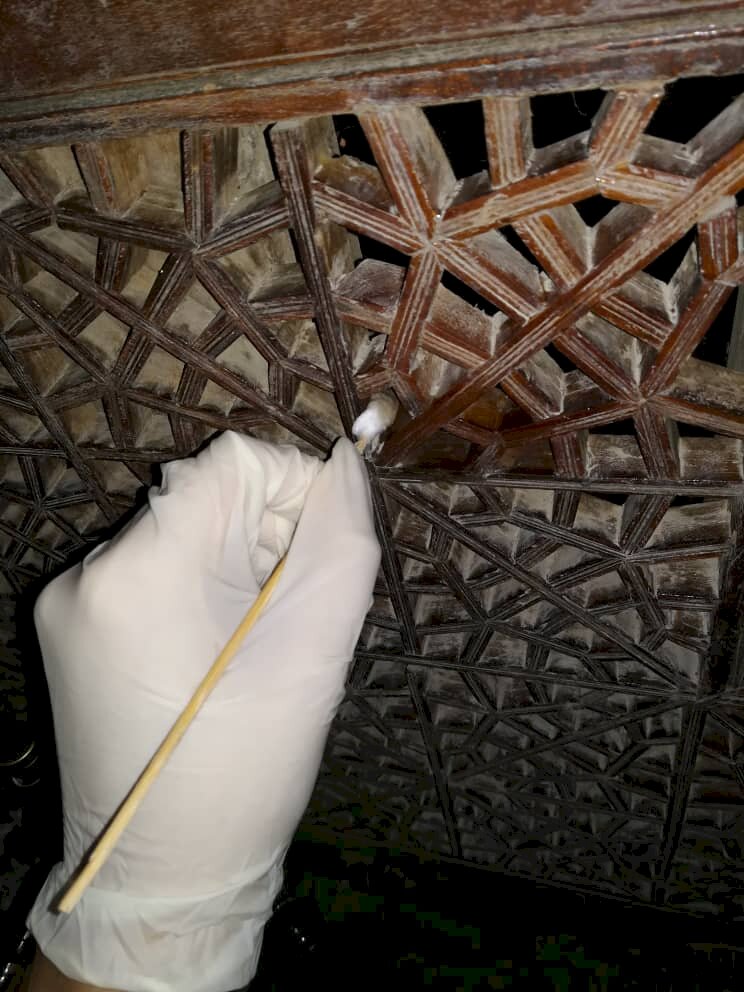Ancient mosque pulpit gains former glory

TEHRAN – A restoration project has been commenced on a minbar (pulpit) of the centuries-old Jameh Mosque of Urmia, which stands tall in the northwestern Iranian city, the capital of East Azarbaijan province.
A minbar is where the imam stands to deliver sermons in a mosque or in the Hussainia where the speaker sits and lectures the congregation.
The restoration project involves strengthening, cleansing, and repairing the damaged parts of the wooden pulpit, which dates back to the Qajar-era (1789-1925), the provincial tourism chief has said.
A budget of 250 million rials (about $6,000 at the official exchange rate of 42,000 rials per dollar) has been allocated to the project, Jalil Jabbari announced on Wednesday.
On the back of the minbar the date of its construction is inscribed, showing the year 1302 AH, which dates back to the reign of Nasser al-Din Shah Qajar (1848-1896), the official added.
Due to its value, the pulpit was inscribed on the National Heritage list last year, he explained.
According to Britannica, during the first century of Islam, provincial governors also came to use the minbar, from which they made speeches and heard petitions, primarily in their capacity as rulers. When the khutbah lost its informative, political, and discursive character and became a purely religious sermon during the reign of the Abbasid caliphs, the minbar also became a religious object. It became more permanent, the number of steps increased, and it was commonly executed in stone or brick.
The Jameh Mosque of Urmia, known as Rezayieh Mosque, is located in a historical neighborhood of the city, and the mosque was constructed in the 13th century during the Ilkhanate era.
Urmia also spelled Orumiyeh, lies just west of Lake Urmia on a large fertile plain that yields grains, fruits, tobacco, and other crops. The population is mainly Azeri Turkish, with Kurdish, Assyrian Christian, and Armenian minorities. The remains of ancient settlements are scattered over the plain, as are traces of the ancient kingdom of Urartu.
ABU/AFM
Leave a Comment